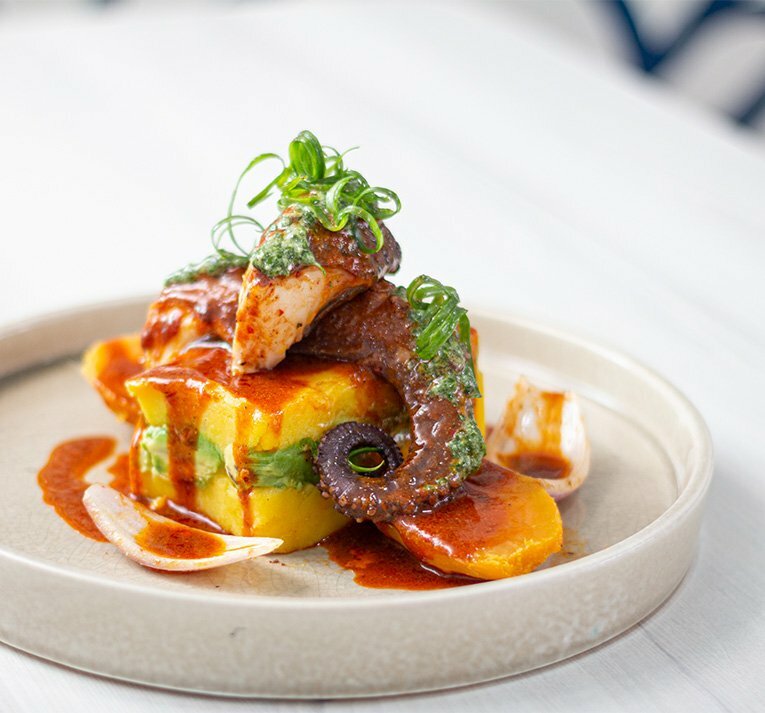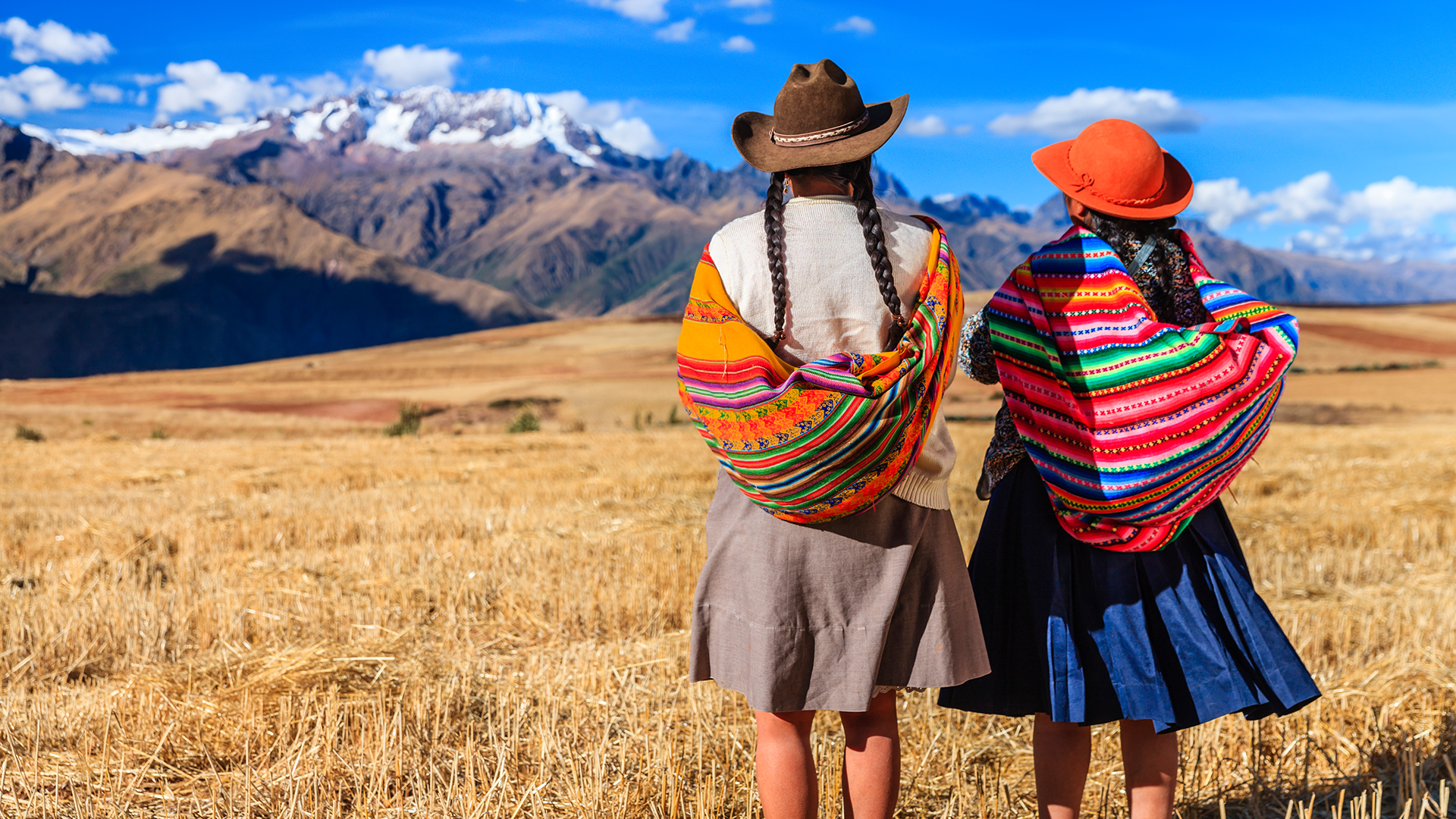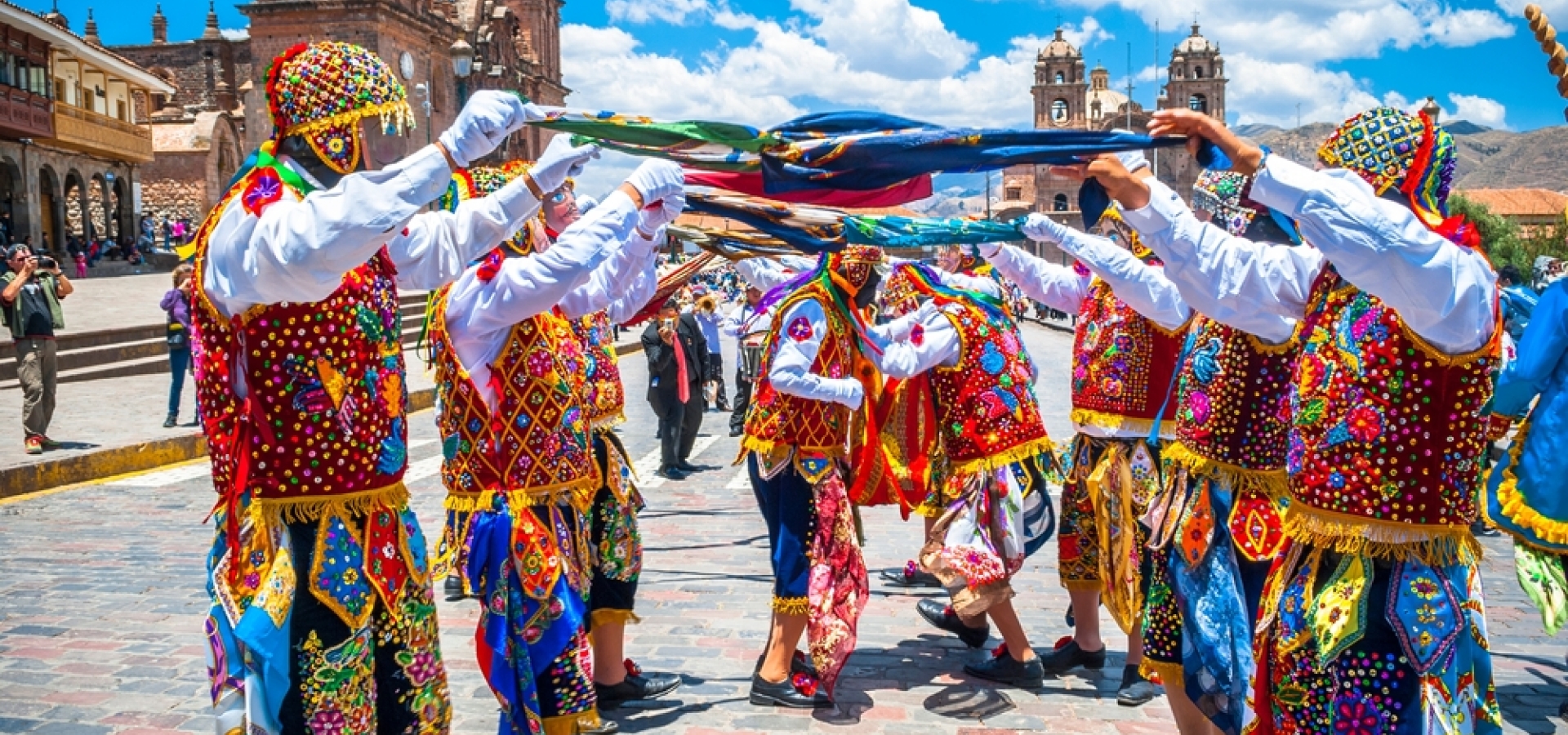Experiencing Peru: A Cultural Odyssey for Indian Travel Enthusiasts

Overview of Peru’s Cultural Diversity
Peru is a vibrant tapestry woven from its rich history and the myriad indigenous cultures that inhabit it. Each thread contributes to the nation’s unique identity, painting a picture that is not just visually stunning but also deeply meaningful. As you navigate through this diverse cultural landscape, you’ll discover how the past has shaped modern-day Peru, making it a delightful and enriching destination for every traveller.
Rich History of Peru
Peru's history is as complex as it is captivating, marked by significant civilisations, conquests, and a fusion of cultures. Let’s take a quick glance at some of the key historical milestones:
- Ancient Civilisations: The Norte Chico civilization is one of the oldest in the Americas, dating back to around 3000 BC. This was followed by prominent cultures like the Moche and Nazca, each leaving behind remarkable archaeological treasures.
- Inca Empire: The Incas, who emerged in the early 15th century, expanded their influence across a vast territory, becoming the largest empire in pre-Columbian America. Their sophisticated systems of agriculture, architecture, and governance were unmatched.
- Spanish Conquest: The arrival of Spanish conquistadors led by Francisco Pizarro in the 16th century marked a turning point in Peruvian history. The dramatic clash of cultures resulted in the influx of European influences, which can still be seen today in the form of religion, language, and customs.
- Modern Day: Today, Peru is a democratic republic with a rich blend of traditions, languages, and practices stemming from both its indigenous roots and colonial history.
By understanding this historical backdrop, you gain insight into Peru’s identity and the deep-seated pride its people have in their cultural heritage.
Indigenous Cultures in Peru
Diversity truly shines in Peru’s indigenous cultures, which number over 50 different groups, each with their own languages, traditions, and lifestyles. The richness of these cultures adds a vibrant layer to Peru’s identity, and the following highlights exemplify this remarkable diversity:
- Quechua and Aymara: These two groups are the most prominent. The Quechua, famous for their connection to the Inca heritage, continue to uphold traditions such as weaving and agriculture. The Aymara, meanwhile, are known for their intricate textiles and distinctive music.
- Traditional Practices: Rituals and practices vary across communities. For instance, the Q'ero people maintain ancient customs, holding ceremonies to honour Pachamama (Mother Earth).
- Art and Music: The diverse musical traditions range from joyful Andean flutes to the rhythmic beats of drums in the Amazon. The vibrant colours found in traditional clothing reflect the natural beauty of Peru’s landscapes.
- Language Diversity: While Spanish is the official language, around 47 other languages are spoken, including Quechua and Aymara. This linguistic variety showcases the heritage and continuation of indigenous storytelling, songs, and oral traditions.
In exploring these rich histories and cultures, you not only appreciate Peru's past but also gain a greater understanding of its people's resilience. The legacy of indigenous communities continues to influence modern Peruvian culture, offering visitors a truly multifaceted experience.

Must-Visit Cultural Sites in Peru
As you delve deeper into Peru's multifaceted tapestry of culture, the must-visit sites offer a glimpse into the country’s rich historical narrative. From ancient Inca wonders to breathtaking valleys, these cultural treasures are essential stops on any adventurous itinerary.
Machu Picchu: The Lost City of the Incas
No trip to Peru would be complete without a visit to the iconic Machu Picchu, often referred to as the Lost City of the Incas. Nestled high in the Andes Mountains, this UNESCO World Heritage site is nothing short of awe-inspiring.
- Awe-inspiring Architecture: The precision with which the stones were crafted and fitted together without mortar has left historians pondering its techniques for centuries. As you wander through the terraced fields and intricately designed temples, you’ll feel as if you’ve stepped back in time.
- Incredible Views: The panoramic vistas of the surrounding peaks serve as a breathtaking backdrop as you explore various sectors of the site, including the Temple of the Sun and the Intihuatana stone, believed to have been an astronomical observatory.
- Cultural Significance: This ancient citadel was not only a royal estate but also a spiritual retreat, reflecting the Inca’s deep connection to their environment and cosmology. Understanding its historical context adds layers of meaning to your visit.
To reach Machu Picchu, you have options from the scenic train journey from Cusco to treks like the famed Inca Trail, offering visitors a variety of ways to experience this remarkable site.
Sacred Valley: Gateway to Inca Civilization
Just a stone's throw from Machu Picchu lies the Sacred Valley, often regarded as the vibrant heart of the Inca Empire. This lush, fertile valley is laden with cultural gems and stunning landscapes, making it a must-visit during your Peruvian adventure.
- Historical Markets: Towns like Pisac and Ollantaytambo are not only known for their archaeological sites but also for their lively markets. The bustling markets are the perfect place to experience local culture, where you can purchase handmade crafts, textiles, and fresh produce.
- Inca Ruins: The valley is dotted with impressive Inca ruins like the agricultural terraces of Moray and the salt flats of Salinas. Each site provides insight into the ingenious engineering and agricultural practices of the Incas.
- Cultural Experiences: Engaging with local artisans, you can learn about traditional textile weaving and even participate in workshops. These interactions enrich your understanding of modern Andean life shaped by ancient practices.
- Breathtaking Scenery: Beyond the cultural sites, the valley’s landscapes adorned with snow-capped peaks, terraced fields, and vibrant flowers are a feast for the eyes. A hike or horseback ride through this stunning region offers an unforgettable way to experience the beauty of Peru.
Exploring Machu Picchu and the Sacred Valley gives you not only an appreciation for Peru’s historical importance but also a profound connection to its vibrant cultures and traditions. These sites serve as a testament to a past that continues to resonate in Peru's present. So, pack your camera and your sense of adventure as you embark on this incredible journey through time!

Experiencing Peruvian Cuisine
Having explored the historical richness and cultural treasures of Peru, it's time to dive into one of the most delightful aspects of the country: its cuisine. Peruvian food is a fusion of flavours, ingredients, and traditions, reflecting the diversity of its regions and cultures. You’ll find that every dish tells a story, making your culinary journey an adventure worth savouring.
Culinary Delights of Lima
Lima, often dubbed the gastronomic capital of South America, is home to an eclectic mix of culinary influences that make for an unforgettable dining experience. The city boasts an array of restaurants, from modest eateries to world-renowned fine dining establishments.
- Ceviche: This flagship dish of Lima features fresh raw fish marinated in lime juice, mixed with onions, cilantro, and a hint of chilli. Sampling authentic ceviche from a local eatery is a must for any visitor.
- Pachamanca: A traditional dish that embodies the flavours of Peru, pachamanca involves marinating local meats and vegetables and then cooking them underground with heated stones. It’s a communal dish often celebrated during family gatherings.
- World-Class Restaurants: Lima is home to acclaimed restaurants like Central and Maido, which regularly find themselves on lists of the best dining experiences globally. With professionally trained chefs using innovative techniques and ingredients sourced from various regions of Peru, dining here is a treat not to be missed.
- Food Tours: Consider embarking on a culinary tour of Lima – it’s a fantastic way to discover street food, market delicacies, and hidden culinary gems.
Grabbing a bite in Lima isn't just about the food; it’s an experience that brings you closer to the heart of Peruvian culture.
Traditional Food and Drink Experiences
Beyond Lima, the wonders of Peruvian cuisine continue to unfold across the country. Each region flaunts its own culinary magic, deeply rooted in tradition and local produce.
- Andean Staples: Explore the highlands and try dishes featuring quinua and potatoes, of which Peru boasts thousands of varieties. Don't miss a chance to sample “Papa a la Huancaína,” a dish consisting of boiled potatoes topped with a creamy, spicy cheese sauce.
- Amazonian Flavors: In the Amazon region, you can enjoy unique dishes featuring exotic ingredients, such as river fish and local fruits like camu camu or aguaje. These flavours reflect the biodiversity of the region and provide a culinary experience unlike any other.
- Refreshing Beverages: Pair your meals with traditional drinks such as “Chicha Morada,” a refreshing non-alcoholic beverage made from purple corn, or “Pisco Sour,” the national cocktail made with pisco, lime juice, and egg whites. Each sip transports you deeper into Peru's cultural tapestry.
- Cooking Classes: For a hands-on experience, consider taking a cooking class. It’s a great way to learn about local ingredients and cooking techniques while creating your own Peruvian dishes. It not only fills your stomach but also enriches your understanding of the culture.
Experiencing Peruvian cuisine is more than just satisfying hunger; it’s about indulging in traditions, stories, and the vibrant spirit of its people. With each bite, you’ll find yourself immersed in rich flavour profiles that celebrate the heart and soul of this beautiful country.
So, whether you’re dining in a bustling market or a swanky restaurant, let the flavours of Peru tantalise your palate and leave you longing for more!

Exploring Peruvian Arts and Crafts
As you continue your adventure through Peru, don’t miss the chance to dive into the flourishing world of Peruvian arts and crafts. The vivid colours, intricate designs, and cultural significance behind these creations offer a fascinating glimpse into the heart of Peruvian culture. Whether you're strolling through local markets or witnessing traditional performances, each experience brings you closer to the soul of the nation.
Local Markets and Handicrafts
Peru's local markets are a treasure trove of handicrafts and artisanal products, embodying the creativity and skills of its diverse communities. Each stall is a canvas displaying vibrant textiles, stunning ceramics, and intricate woodwork.
- Handwoven Textiles: From colourful ponchos to intricate shawls, the textiles produced here are a visual delight. Weaving techniques have been passed down through generations, often using traditional patterns that reflect local beliefs and stories.
- Ceramics: Visit markets like Pisac or Ollantaytambo, where you'll encounter beautiful pottery adorned with traditional motifs. These ceramics not only serve functional purposes but can also be artistic expressions, showcasing the culture of the Andean people.
- Jewellery: Local artisans craft stunning pieces from silver, often incorporating traditional symbols and gemstones like turquoise and amber. These pieces make for unique souvenirs that carry the spirit of Peru.
- Buying Tips: When purchasing from local markets, take the time to engage with the artisans, learning about their techniques and what inspires their work. Bargaining is a common practice, so don’t hesitate to negotiate a fair price while supporting local craftsmanship.
Engaging with local markets allows you not only to bring home beautiful items but also to connect with the community and appreciate the stories behind each creation.
Traditional Music and Dance Performances
Peruvian culture is richly layered, and traditional music and dance play a vital role in expressing its identity. You’ll find that these performances are infused with both history and joy, providing a lively atmosphere that’s infectious.
- Dances: Each region has its unique dances, often reflecting historical influences or local myths. For instance, the Marinera dance is a romantic portrayal of courtship, celebrated during festivals with its graceful movements and vibrant costumes. The lively Huaylash dance from the Andes showcases community spirit and cultural resilience.
- Instruments: Traditional music features a variety of instruments, including the charango (a string instrument made from armadillo shells) and pan flutes. Attend a local performance and marvel at how these instruments blend harmoniously to create enchanting melodies.
- Cultural Festivals: Don’t miss traditional festivities like Inti Raymi or Carnival, where the streets come alive with music and dances. These grand celebrations highlight the significance of community and connection to ancestral heritage.
- Participating in Performances: If you’re feeling adventurous, join a dance workshop! Many centres offer classes in traditional dance, giving you an opportunity to experience the rhythm of Peru first-hand while connecting with local culture.
From the bustling markets filled with handmade treasures to the heartwarming rhythms of traditional performances, exploring Peruvian arts and crafts offers a unique perspective on the country’s heritage. Each interaction enriches your adventure, allowing you to build a deeper appreciation for the culture and the incredible people behind it. So, immerse yourself in the artistic spirit of Peru—you’re bound to leave with not just souvenirs but cherished memories that resonate long after your visit.

Immersing in Peruvian Festivals
Having explored the vibrant arts and crafts of Peru, no experience encapsulates the country’s rich cultural fabric quite like its festivals. These celebrations blend history, spirituality, and community spirit, providing an opportunity for visitors to join local residents in joyous revelry. Two of the most spectacular festivals you should consider experiencing are Inti Raymi, the Festival of the Sun, and the Corpus Christi celebration in Cusco.
Inti Raymi: Festival of the Sun
Inti Raymi is one of the most iconic and significant festivals in Peru, celebrating the Inca sun god, Inti. Traditionally held on June 24 each year in Cusco, it marks the winter solstice and the Andean New Year, symbolising the return of the sun and the beginning of the harvest season.
- Historical Significance: Dating back to the Inca Empire, this festival was vital for agricultural society. It showcased the Inca’s deep respect for nature and the sun, crucial for their crops.
- Vibrant Reenactments: Today, thousands gather in the Plaza de Armas to witness a grand reenactment featuring elaborate costumes, traditional music, and dramatisations of Inca rituals. Participants, adorned in vibrant clothing, perform offerings to the sun, paying homage to Inti in a dazzling display.
- Getting Involved: If you’re lucky enough to be in Cusco during this time, make sure to find a good vantage point to experience the festivities. Watching the spectacle unfold in the historic heart of the city is truly enchanting.
The energy of Inti Raymi is palpable, and it creates an electric atmosphere that brings everyone together, bridging the gap between the past and present.
Corpus Christi Celebration in Cusco
Following closely behind in terms of cultural significance is the Corpus Christi celebration, which takes place in Cusco every June. This vibrant festival showcases the fusion of indigenous beliefs and Catholic traditions, enthralling both locals and visitors alike.
- Religious Procession: Corpus Christi involves a series of engaging processions leading to the main plaza, where various saints are paraded, each representing different neighbourhoods of Cusco. The development of the procession incorporates both traditional Andean elements and Catholic influences.
- Culinary Highlights: One of the festival’s points of allure is the traditional food associated with Corpus Christi. Street vendors abound, offering special dishes such as “chiri uchu,” a vibrant and spicy dish showcasing local ingredients, including chicken, cheese, and corn. These culinary delights are not just satisfying for the palate but are also steeped in history and rarity.
- Cultural Immersion: Attending Corpus Christi grants you a chance to experience the fervour of faith, community, and tradition. Joining the locals, you’ll find it impossible not to be swept up in the celebration's joy and atmosphere.
Engaging in these festival experiences immerses you in Peru's cultural rhythm and provides insight into the deep-rooted traditions that define this remarkable country. These celebrations embody community spirit, rich history, and a shared connection, reminding us of the beauty of unity amidst diversity.
Whether you're dancing during Inti Raymi or savouring delicious street food during Corpus Christi, you’ll leave with the unforgettable essence of Peru woven into your heart. So, when planning your visit, be sure to align with these vibrant festivals—it's an experience that promises to be both enlightening and exhilarating!
